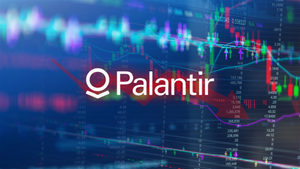
Gold, the perennial safe-haven asset, has recently experienced a notable shift in its market dynamics. After a robust period of gains, the precious metal's upward momentum has tempered as the once-lofty expectations for aggressive interest rate cuts in late 2025 have begun to cool. This recalibration of monetary policy outlook, driven by hawkish signals from the Federal Reserve, is reshaping investor sentiment and prompting a re-evaluation of gold's immediate appeal within the broader financial landscape.
The immediate implication for investors is a less favorable environment for gold, as higher-for-longer interest rates increase the opportunity cost of holding the non-yielding asset. While some analysts view the recent pullback as a technical correction and a potential buying opportunity, the shift in interest rate expectations necessitates a strategic reassessment for those looking to capitalize on gold's traditional role as a hedge against economic uncertainty and inflation.
Diminished Rate Cut Hopes and Gold's Recent Trajectory
The narrative surrounding gold prices has taken a nuanced turn in late 2025. While the precious metal enjoyed a strong bullish rally for much of the year, including a significant surge in October, its momentum has recently decelerated. This shift is largely attributed to diminishing prospects for further aggressive Federal Reserve rate cuts, coupled with an easing of U.S.-China trade tensions, both of which have reduced the immediate demand for safe-haven assets.
Specifically, gold prices edged lower on October 31st, as market participants scaled back their bets on additional rate reductions. On Thursday, October 30th, MCX December gold futures saw a drop of Rs 1,671, while international U.S. gold futures for December delivery slipped by 1.1%. By November 3rd, spot gold had fallen to $3,997.94 an ounce, marking an approximately 10% decline from its record high of $4,381.21 achieved on October 20th. Despite this recent correction, October still concluded with gold rising by $141.40 (3.68%) per troy ounce, securing its third consecutive monthly increase.
The primary catalyst for this cooling sentiment around rate cuts has been a series of hawkish remarks from Federal Reserve Chair Jerome Powell. These comments have led to a significant adjustment in market expectations. The CME Group's FedWatch Tool, a key indicator of market-implied probabilities for Fed rate changes, showed a drop in the likelihood of a December rate cut to approximately 70-71%, a notable decrease from over 90% prior to Powell's statements. This cautious stance from the Federal Reserve has effectively dampened the "rate cut hopes" narrative that typically provides strong support for gold prices. Simultaneously, the easing of U.S.-China trade tensions has fostered a "risk-on" sentiment across markets, further diverting capital away from traditional safe havens like gold and towards more growth-oriented assets, particularly equities.
Key players in this unfolding scenario include the Federal Reserve, whose monetary policy decisions exert significant influence over interest rate expectations and, consequently, gold's attractiveness. Major central banks, particularly those in emerging markets, also play a crucial role through their continued gold purchasing, which provides a structural floor for prices. Investors, both institutional and retail, are the primary stakeholders, constantly adjusting their portfolios in response to these macroeconomic shifts. Initial market reactions have seen a slight rotation out of gold, but with underlying support from persistent global fiscal debt loads and geopolitical uncertainties, the long-term bullish outlook for gold remains a point of contention and debate among analysts.
Corporate Fortunes in a Shifting Gold Landscape
The evolving gold market, characterized by diminished rate cut hopes, presents a mixed bag of opportunities and challenges for various public companies. While a sustained period of higher gold prices generally benefits the mining sector, the recent volatility and uncertainty around interest rates require careful consideration.
Gold mining companies, such as Barrick Gold Corp. (NYSE: GOLD) and Newmont Corporation (NYSE: NEM), are typically the primary beneficiaries of rising gold prices. Higher prices translate directly into increased revenues and potentially fatter profit margins, assuming production costs remain stable. However, the recent pullback in gold, even if viewed as a correction, can introduce short-term pressure on their stock performance. If gold prices consolidate or decline further due to prolonged higher interest rates, these companies might face headwinds, impacting their profitability and expansion plans. Conversely, if the underlying structural support for gold (e.g., central bank buying, geopolitical risks) proves stronger than the rate-cut-hopes narrative, these miners could still thrive. Their ability to manage operational costs and expand reserves efficiently will be crucial in navigating this environment.
Companies in the jewelry and luxury goods sector, such as Tiffany & Co. (NYSE: TIF, now part of LVMH) or Richemont (SWX: CFR), could face challenges if gold prices remain elevated and volatile. While gold is a key component of their products, significant price increases can squeeze margins or necessitate higher retail prices, potentially impacting consumer demand. However, strong brand recognition and luxury market resilience can often mitigate some of these effects. On the other hand, a stable or slightly declining gold price after a significant run-up could offer some relief on input costs.
Financial institutions and investment firms that offer gold-backed ETFs or other gold investment products, like BlackRock (NYSE: BLK) with its iShares Gold Trust (NYSEARCA: IAU), might see fluctuations in demand for these products. A decrease in investor appetite for gold due to higher opportunity costs from rising interest rates could lead to outflows from these funds. Conversely, if gold's role as a safe haven is reasserted amidst broader market instability, these products could see renewed interest. Their success largely hinges on broader investor sentiment towards gold as an asset class. Overall, companies with strong balance sheets, efficient operations, and diversified portfolios are better positioned to weather the current market uncertainties surrounding gold and interest rates.
Broader Significance: Gold's Enduring Role Amidst Economic Crosscurrents
The recent recalibration of gold's performance in response to cooling interest rate cut hopes is not an isolated event but rather a significant indicator of broader industry trends and economic crosscurrents. It highlights the intricate relationship between monetary policy, inflation expectations, and the appeal of traditional safe-haven assets. This event underscores a shift from a purely dovish outlook on interest rates to a more balanced, and at times hawkish, perspective from central banks, particularly the Federal Reserve.
This development fits into a broader trend where global central banks are grappling with persistent inflationary pressures while trying to avoid tipping economies into recession. The "higher for longer" interest rate mantra, even if not fully realized, influences the entire financial ecosystem. For gold, this means its role as a non-yielding asset becomes less attractive relative to interest-bearing alternatives when real rates are rising or expected to remain elevated. This dynamic can cause ripple effects, potentially drawing capital away from gold and into assets that offer yield, such as government bonds or even certain dividend-paying equities.
Regulatory and policy implications are also at play. Central bank communications, like those from Fed Chair Powell, are meticulously scrutinized, and any perceived shift in policy direction can trigger significant market movements. The easing of U.S.-China trade tensions, while seemingly unrelated to interest rates, also has a policy dimension, as it reduces geopolitical uncertainty, thereby diminishing the immediate need for safe-haven assets. This interplay of monetary policy and geopolitical stability creates a complex environment for gold.
Historically, gold has often thrived in periods of high inflation or economic uncertainty, acting as a hedge. Conversely, periods of strong economic growth and rising real interest rates have typically seen gold's appeal wane. The current situation presents a hybrid scenario: while inflation remains a concern, the prospect of sustained higher interest rates aims to combat it, creating a push-pull effect on gold. Comparing this to similar events, such as periods of Fed tightening in the past, reveals that gold's performance is highly sensitive to the perceived trajectory of interest rates. However, what differentiates the current environment are unprecedented levels of global fiscal debt and ongoing geopolitical instability, which provide a structural floor for gold demand, particularly from central banks in emerging markets. This suggests that while short-term rate expectations can create volatility, gold's long-term strategic importance as a diversifier and store of value may remain intact.
What Comes Next: Navigating Gold's Future Trajectory
Looking ahead, the gold market is poised for a period of continued scrutiny, with both short-term fluctuations and long-term trends influenced by evolving economic conditions and central bank policies. In the short term, gold prices will likely remain sensitive to incoming economic data, particularly inflation reports and employment figures, which will further inform the Federal Reserve's stance on interest rates. Any signs of persistent inflation could reinforce a "higher for longer" narrative, potentially capping gold's upside, while unexpected economic slowdowns or renewed geopolitical tensions could quickly reignite its safe-haven appeal.
For investors, potential strategic pivots or adaptations will be crucial. This might involve a more tactical approach to gold allocation, perhaps increasing exposure during periods of heightened market uncertainty or when real interest rates show signs of decline. Conversely, a more cautious stance may be warranted if global economic growth proves resilient and central banks maintain a hawkish bias. Market opportunities could emerge for investors willing to buy on dips, viewing recent corrections as entry points for long-term positions, especially given the ongoing structural support from central bank buying and persistent global debt concerns.
Long-term possibilities for gold remain robust, albeit with potential volatility. The erosion of global trust levels, coupled with the precarious fiscal outlook in many Western economies, continues to underpin gold's role as a store of value and a hedge against systemic risk. Potential scenarios include a sustained period of sideways trading for gold if interest rates remain elevated but inflation is contained, or a renewed rally if inflation proves stickier than anticipated, forcing central banks to eventually ease monetary policy, or if geopolitical risks escalate significantly. Another scenario involves gold continuing to decouple from traditional interest rate sensitivities due to the sheer volume of global liquidity and the increasing diversification efforts by central banks. Ultimately, gold's trajectory will be a delicate balance between the immediate impact of monetary policy expectations and its enduring role as a fundamental hedge against broader economic and geopolitical uncertainties.
Comprehensive Wrap-Up: Gold's Enduring Allure in a Dynamic Market
In summary, gold's recent market performance reflects a nuanced interplay of factors, with cooling hopes for aggressive interest rate cuts by the Federal Reserve acting as a significant immediate influence. While the precious metal experienced a strong run throughout 2025, culminating in a record high in October, the subsequent recalibration of interest rate expectations has led to a modest pullback. This shift underscores the sensitivity of gold, a non-yielding asset, to the opportunity cost presented by interest-bearing investments. However, it is crucial to note that despite short-term volatility, underlying structural supports, such as persistent global fiscal debt, geopolitical uncertainties, and consistent central bank purchasing, continue to provide a floor for gold prices.
Moving forward, the market will remain highly dynamic, with gold's trajectory influenced by the ongoing tug-of-war between monetary policy expectations and its intrinsic value as a safe haven. Investors should not view the recent cooling of rate cut hopes as an outright bearish signal for gold, but rather as a catalyst for a more discerning approach. The current environment necessitates a re-evaluation of investment strategies, potentially favoring tactical allocations that capitalize on price dips or periods of increased market uncertainty.
The lasting impact of this period will likely be a reinforced understanding of gold's dual nature: both a commodity sensitive to real interest rates and a timeless store of value against systemic risks. What investors should watch for in the coming months includes further clarity on the Federal Reserve's interest rate path, global inflation trends, and any escalation or de-escalation of geopolitical tensions. These factors will collectively determine whether gold continues to find its groove as a resilient asset class or experiences further re-pricing in a world grappling with evolving economic realities.
This content is intended for informational purposes only and is not financial advice






